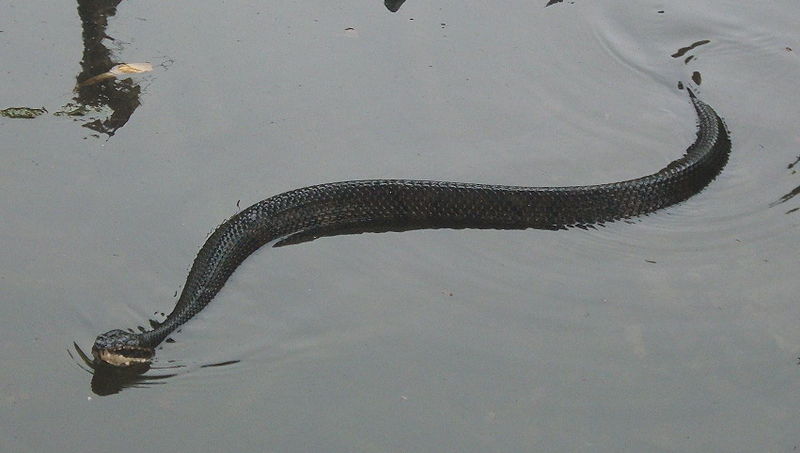Adult cottonmouth / Alabama Cooperative Extension System
Updated 7-5-17 at 11 a.m.
Posted 7-4-17 at 8:02 p.m.
CULLMAN – A Cullman man reported Tuesday being bitten by a cottonmouth snake. Although emergency responders first thought the man had been bitten near his home in the Caroll Acres subdivision on the southeast side of town, family members confirmed that the man was bitten at Welti Falls on Monday, and only called for medical help Tuesday.
The victim's mother, Sherron Miller, said Wednesday morning that her son Jason Curtis,48, was at Welti Falls Monday and was bitten at least three times by a cottonmouth. He is currently in the Critical Care Unit (CCU) at Cullman Regional being treated for those bites.
According to dispatch reports, Cullman Emergency Medical Services (EMS) and Cullman Fire Rescue were dispatched to a residence on Timberlane Drive at approximately 3 p.m. Tuesday, July 4.
"The victim was an adult male, and he was transported to Cullman Regional by ambulance," said Cullman EMS Director James Curtis. "The hospital did have anti-venom on hand to treat him."
Curtis could not release any additional information on the victim or his condition, but he said, "They (cottonmouths) are venomous snakes and can make you very sick, but I have never heard of anyone dying from a cottonmouth bite."
According to the Alabama Department of Conservation and Natural Resources, cottonmouths, also known as water moccasins, are "large, aquatic, venomous snakes. They are generally dark above – olive, brown or black. A lighter to darker cross-banding pattern may be seen, especially on the sides. Adult snakes usually vary in length from 30 to 48 inches up to a maximum of 74 inches. Juveniles are brightly-colored with reddish-brown cross-bands and have a sulfur-colored tail. The reddish-brown cross-bands contain many dark spots and speckles but darken with age so adults retain only a hint of the former banding or are a uniform black… Cottonmouths vibrate their tails when excited. A thoroughly aroused cottonmouth throws its head upward and backward and holds its mouth wide open, revealing a white interior – the origin of the name cottonmouth.
"They inhabit brackish waters and are commonly found in swamps, streams, springs, ponds, sloughs, reservoirs, marshes, and road side drainage ditches. The cottonmouth commonly suns itself on branches, logs, or stones at the water’s edge. It will sometime wander away from its normal habitat in search of food.
"The bite of the cottonmouth is highly dangerous and may be fatal. The venom of the cottonmouth is hemotoxic. The venom breaks down and destroys blood cells and other tissues and reduces the ability of blood to coagulate or clot."
Curtis says this is the first snake bite victim Cullman EMS has treated this year.
Copyright 2017 Humble Roots, LLC. All Rights Reserved.



















